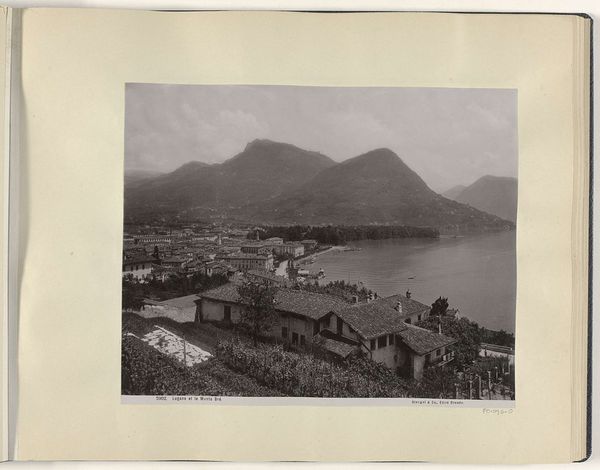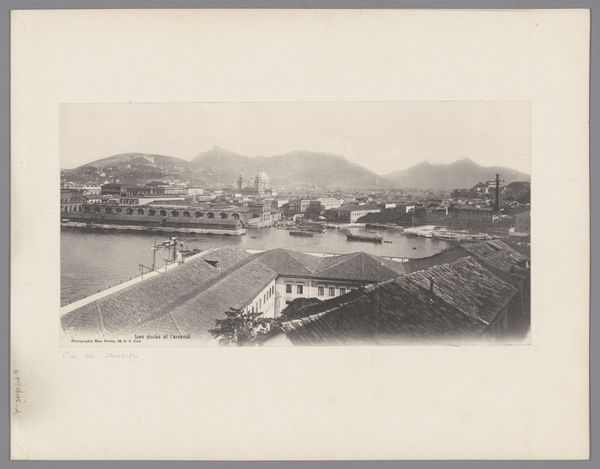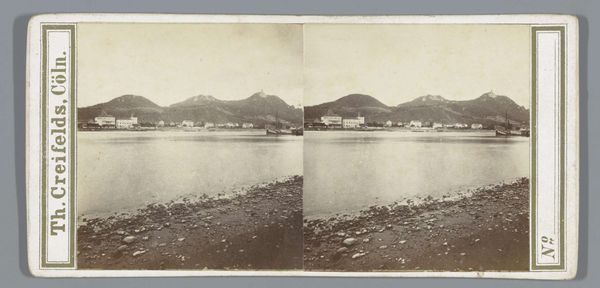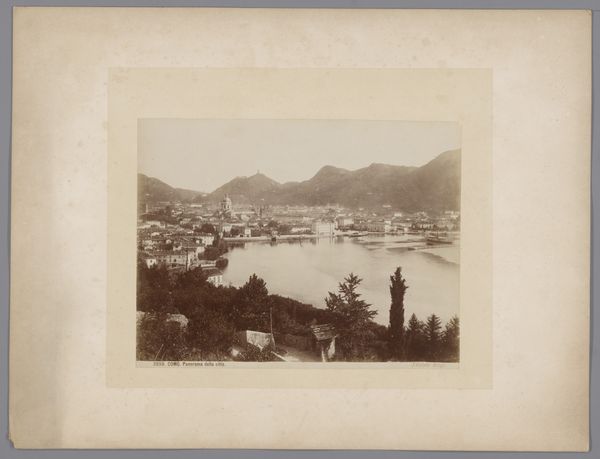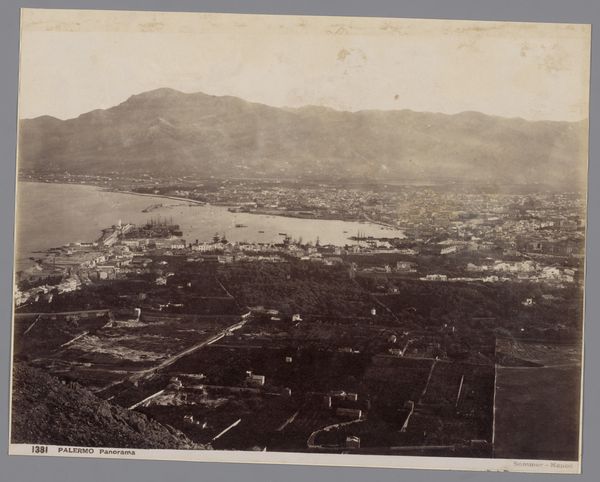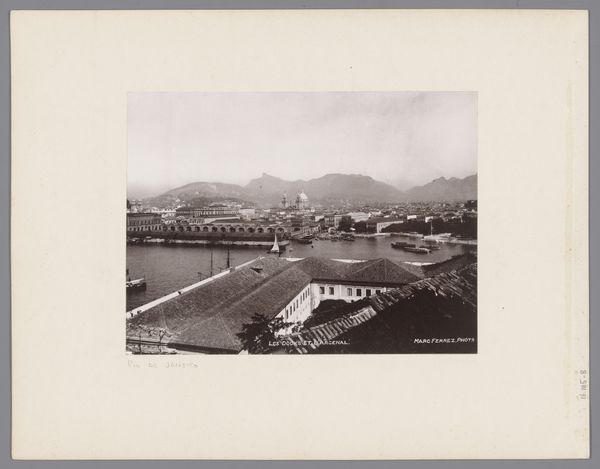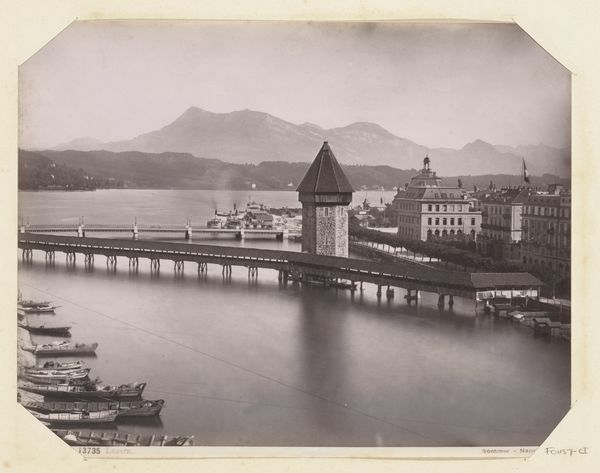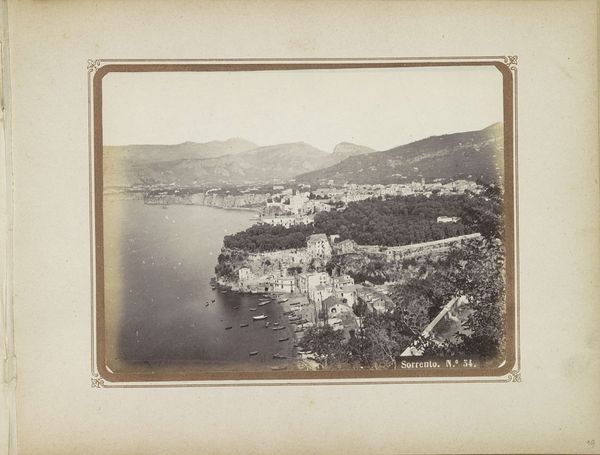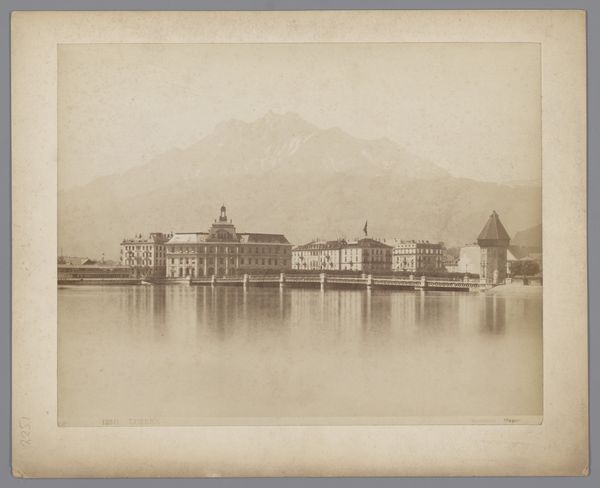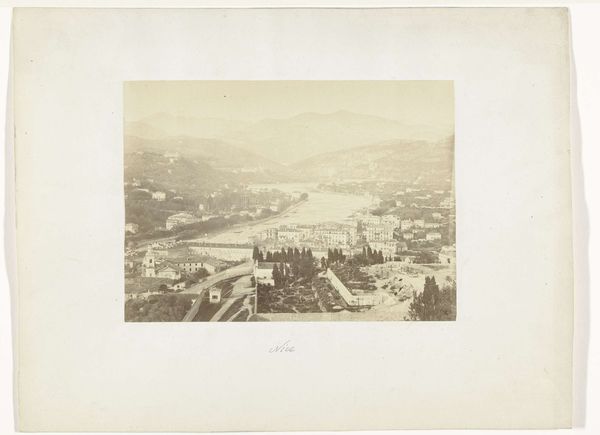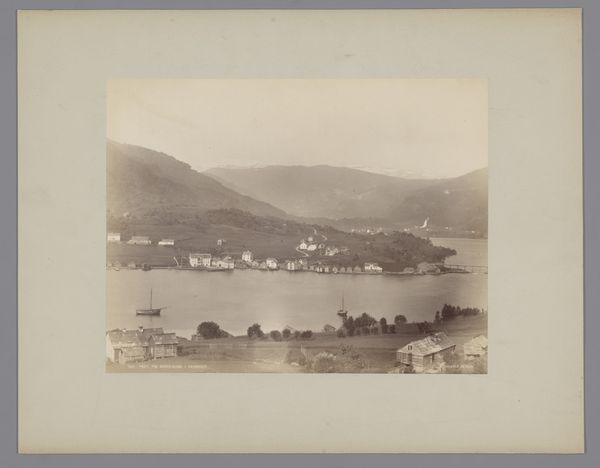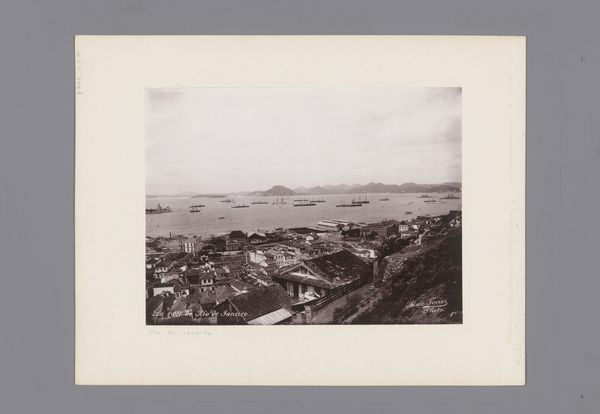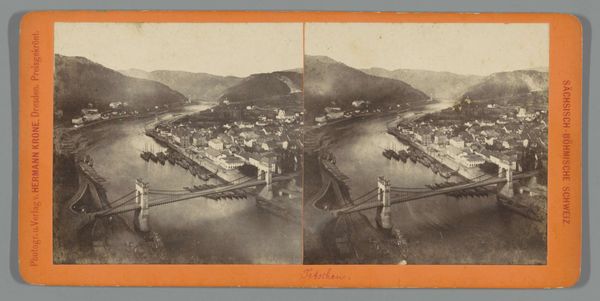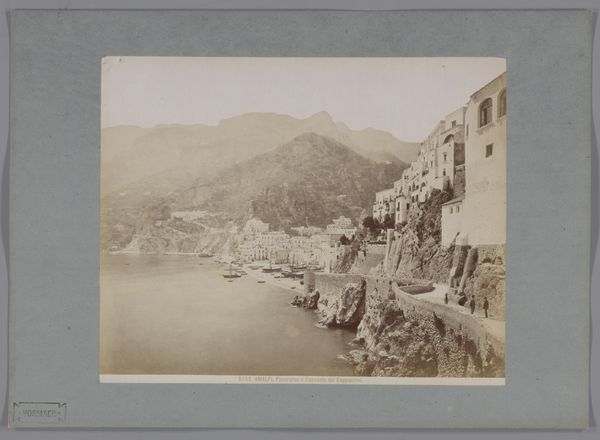
photography, albumen-print
#
pictorialism
#
landscape
#
photography
#
orientalism
#
cityscape
#
albumen-print
Dimensions: height 204 mm, width 253 mm
Copyright: Rijks Museum: Open Domain
Curator: The atmosphere is so dreamlike; I’m immediately drawn into this serene world. Editor: This albumen print presents a view of Lucerne and the Vierwaldstättersee. It was produced by Giorgio Sommer sometime between 1880 and 1910 and forms part of the Rijksmuseum collection. Curator: The composition leads the eye, doesn't it? From the town below up to that almost ethereal mountain range in the distance. The tonal range seems deliberately soft, lending a romantic haze. Editor: Indeed. The Pictorialist aesthetic is evident in its soft focus and atmospheric perspective. Sommer, although well-known for documentary and travel photography, particularly in Italy, seems to be tapping into a romanticized view of landscape here, even elements of Orientalism in how the 'exotic' locale is rendered. This image offered European viewers a carefully constructed experience of Switzerland. Curator: That's what struck me – the 'experience'. This image isn't just recording Lucerne; it’s evoking a feeling, perhaps of escape, or of a tranquil harmony between man and nature. Look at how the church spire mirrors the mountain peak. Conscious symbolism perhaps? Editor: Very possibly. These types of vistas were widely circulated as postcards or collected into albums, and that affected their intent. Consider this also as visual capital, solidifying notions of the sublime. The choice of subject and presentation says as much about the aspirations of its intended audience as about Lucerne itself. Curator: Right. The photograph serves as a signifier. And yet, looking at it now, over a century later, that symbolic encoding persists. It is difficult to disconnect from the established visual language. Editor: True. And consider how our present-day expectations are molded, too. It is a delicate balance of considering the photograph as a historical document and as a continuously evolving symbol. Curator: It reminds us to really look closely, doesn't it, to consider the weight of symbols within something as apparently straightforward as a landscape. Editor: Absolutely. I appreciate how digging deeper into such an image reveals those complexities that reshape its meaning with time.
Comments
No comments
Be the first to comment and join the conversation on the ultimate creative platform.
